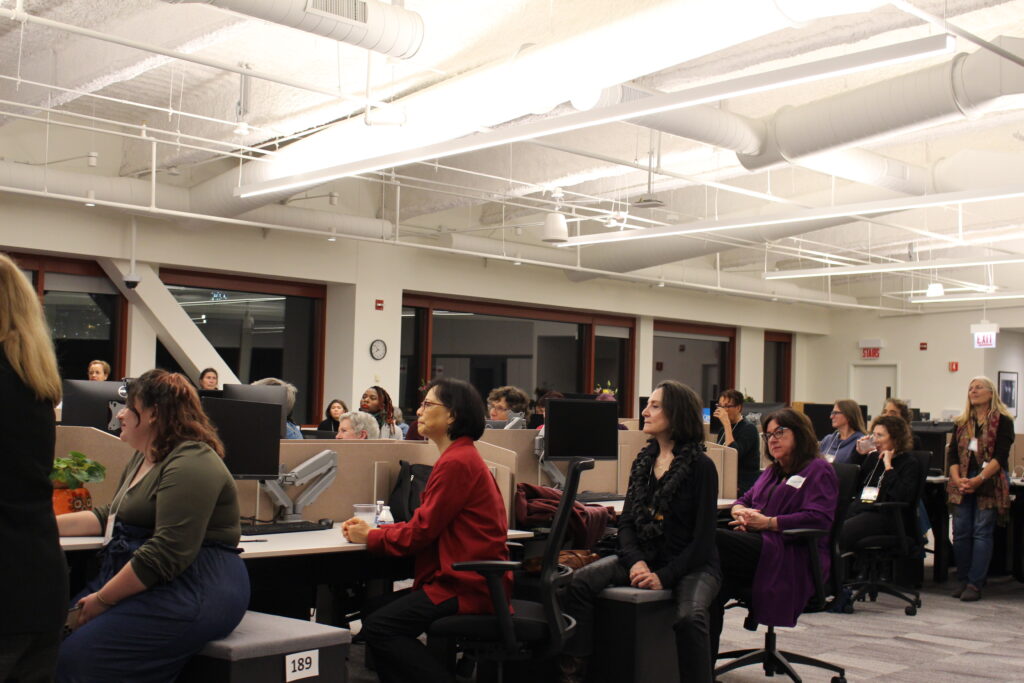
By Madeline Papcun | UConn Journalism
April 2024
All sources for this project were asked what changes need to happen in news industry to retain mothers and caregivers as journalists. Here are some of the solutions they shared.
Freelancing and independent journalism
Katherine Reynolds Lewis, an independent journalist and co-founder of the Institute for Independent Journalists, and Katherine Goldstein, a digital journalist and consultant, attributed much of their recent success in balancing motherhood and journalism with being freelancers and working for themselves. As Lewis noted, being able to decide one’s priorities based on what is at hand that day — whether it be making it to child care pick up or completing that one last interview for a story — makes the day-to-day just that much easier.
As Goldstein explained, having been freelance for the last few years, going back to working for someone else and following someone else’s schedule would be “so impossible” nowadays.
However, freelance doesn’t solve the issue of pay that can also make journalism and caregiving tough to balance.
“I mean, I’ve never made as much money as I did at that last job,” Goldstein noted, chuckling. “That’s the reality.”
Enterprise reporting

Lewis also prefers the enterprise reporting that is easier to come by as a freelance reporter, both for personal fulfillment with her work and for scheduling purposes — not being in breaking news was a “really great fit” to also allow for the demands of motherhood.
Jacqueline Rabe Thomas, an investigative reporter at Hearst Connecticut Media Group, noted that balancing the needs of her kids and the needs of her reporting got a lot easier when she was able to stop focusing on the “quick-hit” stories and “news of the day,” or in other words, “things that aren’t going to matter tomorrow.”
Relying on personal networks
Angela Greiling Keane, president of JAWS and news director at Bloomberg Government, said that she was able to balance child care and being a reporter when her daughter was younger through relying on her friends in similar situations for last-minute child care, as her parents and in-laws were too far away.
“Living in DC, I had lots of friends with important jobs too, so there was a network where we had each other down as emergency contacts,” she said.
And when there really wasn’t anyone else when a last minute interview, press conference or meeting popped up, she would just “bring her kid along.”
Newsroom redesigns
Christy DeSmith, author of the Poynter piece that sparked this reporting project, noted that there are newsroom changes that could benefit caregivers working in journalism as well. For starters, having shifts and a “functioning night desk” along with earlier deadlines makes it easier to “turn off” from work at the end of the day, and just focus on caregiving.
Furthermore, a redesign to the idea of what the role of an editor is would also benefit parents.
“The ‘Catcher in the Rye’ idea is too much,” DeSmith said, noting that editors cannot be expected to do everything when also fulfilling obligations outside of the newsroom.
Additionally, DeSmith believes it would benefit caregivers to “include mentorship of young writers in job descriptions, rather than leaving it to the whims of a newsroom.” In her experiences, women are either assigned or pressured into the job of editing, training and mentoring young writers.
“This can be hugely rewarding work, but it’s also time consuming — and it has never, in my experience, been included in job descriptions,” she said.
This “invisible and unrewarded work” is necessary, but often falls to women with caregiving responsibilities on top of their own job requirements to maintain.
“Never did a senior editor praise me for the work I did with young writers,” DeSmith added. “However, I’ve had countless young writers reach out to me to express their gratitude.”
Paid parental and maternity leave, child care
There are some industry-wide fixes that would ease the burden on mothers and caregivers in journalism as well. Thomas also noted that her current newsroom offers two benefits for its working parents that she takes advantage of — in addition to a good maternity leave program. There is “a generous donation to that account and [she] can contribute,” pre-taxed, and also a “generous monthly reimbursement program as well,” for childcare costs.
All in all, these two programs together cover about half of Thomas’ infant’s day care costs. However, she has two other school-aged children that she and her husband must pay aftercare for.
Regarding the benefit programs, she said, “That’s gonna keep me!”
To Thomas, a company policy that pays for summer camps or other child care services is different from just increasing pay to accommodate childcare costs.
“It’s making a statement that they prioritize mothers, fathers and parents.” she said.
Greiling Keane noted a change in parental leave policies would have helped at the time when her daughter was born as well. When she became a mother, she got six weeks paid when daughter was born and then chose to take six unpaid weeks as well.
This is in line with the federal Family and Medical Leave Act, which provides certain employees with up to 12 weeks of unpaid, job-protected leave per year and requires that their group health benefits be maintained during the leave. (Though state laws for parental leave may differ, they are in addition to FMLA.)
Under FMLA, employees can take this leave for limited reasons, including the birth and care of the newborn child of an employee, placement with the employee of a child for adoption or foster care, to care for an immediate family member (i.e., spouse, child, or parent) with a serious health condition, or to take medical leave when the employee is unable to work because of a serious health condition.
Employees are only eligible for leave if they have worked for their employer at least 12 months, at least 1,250 hours over the past 12 months, and work at a location where the company employs 50 or more employees within 75 miles.
Years later and working at a different newsroom, company policies allow for six months paid parental leave. Greiling Keane appreciates seeing the change now, even though it was not an option available to her when her daughter was born.